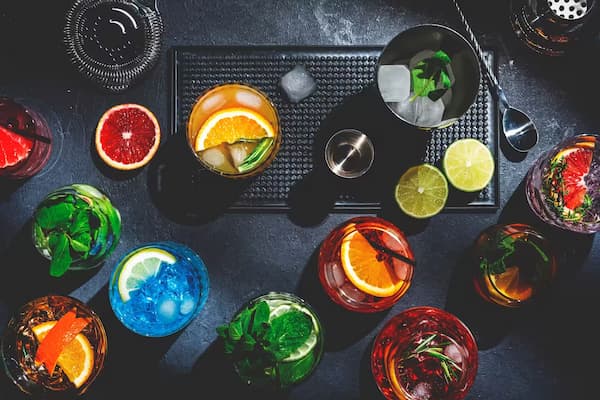White vermouth
With White vermouth you can make
Dry Martini Franklin
South of Brooklyn
Metropolitan
Guillotine
Dirty Martini
Shade Thrower
Dry Martini
White Mezcal Negroni
Dry Martini Wet
We've got 88 cocktails that can be made with White vermouth.
Find out what to make with White vermouth
Q&A
What is the historical background of white vermouth?
White vermouth, or dry vermouth, has its roots in Italy and France, dating back to the late 18th and early 19th centuries. Initially created as a medicinal tonic, its blend of botanicals was believed to have health benefits. Italian and French producers developed distinct styles, with Italy favoring a slightly sweeter version and France a drier style. The infusion of white wine with herbs, spices, and fortified with a neutral spirit gave birth to an aromatic fortified wine. Over time, its popularity grew, especially in the realm of mixology, where it became a cornerstone ingredient for classic cocktails like the Martini and the Manhattan.
What botanicals are commonly used in making white vermouth?
The botanical blend in white vermouth can vary significantly between producers, but commonly includes ingredients such as chamomile, coriander, juniper, and citrus peel. Each recipe is often a closely guarded secret, but these botanicals are chosen for their ability to impart a distinctive herbal, floral, and slightly bitter profile to the vermouth. This unique combination of flavors contributes to white vermouth's versatility in cocktails.
How can one incorporate white vermouth into cocktails?
White vermouth can be incorporated into cocktails in several ways, depending on the desired outcome. It is a key ingredient in classics like the Martini and the Manhattan, where it adds depth and complexity. For a simple application, try using it as a substitute for other vermouth types to explore different flavor profiles. Additionally, white vermouth can be used to create lower ABV cocktails by replacing a portion of the spirits with vermouth, maintaining complexity while reducing potency. Its herbaceous and floral notes also make it a great complement to citrus and fruit-flavored cocktails, enhancing their depth and balance.
What are some popular ways to enjoy white vermouth beyond cocktails?
Beyond its role in cocktails, white vermouth can be enjoyed in several other delightful ways. It can be savored neat, chilled, or on the rocks as an aperitif, often garnished with a twist of lemon or an olive to enhance its botanical flavors. Additionally, mixing it with a splash of soda water and a citrus garnish creates a refreshing, low-ABV beverage perfect for sipping on a warm day. Experiment with different garnishes like herbs or cucumber slices to discover new flavor profiles.
Are there non-alcoholic alternatives to white vermouth for cocktails?
Yes, there are non-alcoholic alternatives that mimic the flavor profile of white vermouth, allowing for the creation of alcohol-free versions of classic cocktails. These alternatives often use a blend of botanical extracts, non-alcoholic wines or grape juices, and sometimes herbal teas to achieve a similar complexity and flavor balance. While the exact match may not be possible due to the unique characteristics of white vermouth, these substitutions can still produce enjoyable and sophisticated mocktails. Look for non-alcoholic aperitifs or botanical infusions labeled as non-alcoholic vermouth alternatives in specialty stores or online.
Ingredients like White vermouth
Other Vermouths
How it works
Easily create your bar from the ingredients you have at home, and we'll show you what you can make with the ingredients you have to hand.
Once you've added this ingredient head to your My bar page and fill up everything else you have.
We'll also show you cocktails that can make by substituting what you have for one of the ingredients you don't, riffing on the original. Now go forth and create something delicious!






